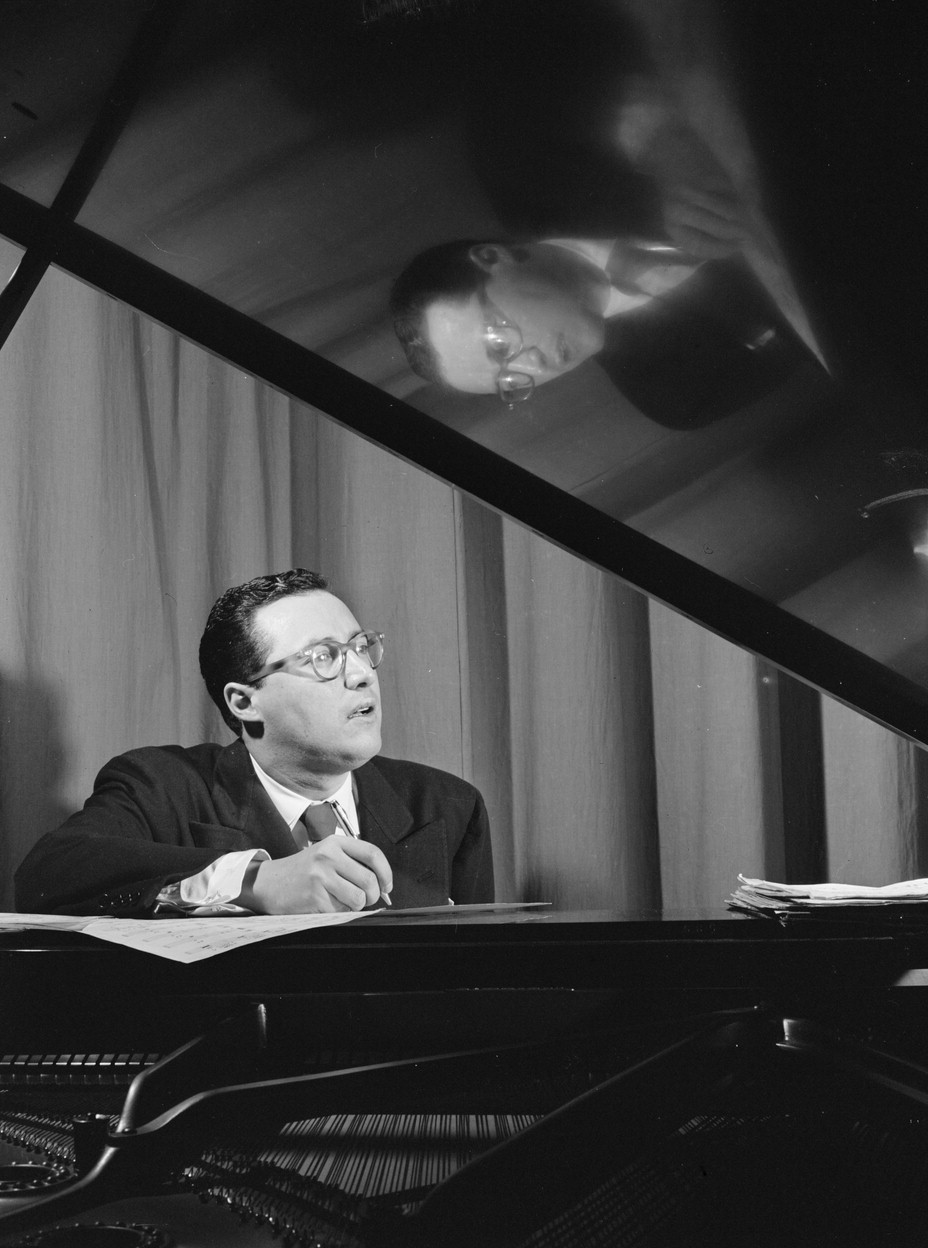
By 1960, the 12-inch album was as commonplace in record-buyers homes as a knife and fork and the stereo format—introduced in 1958—was gaining traction, particularly among single males hoping to impress dates. Meanwhile, the movie industry was having a significant influence on the West Coast's top musicians, who increasingly were being contracted to record soundtracks. As a result, a growing number of West Coast jazz albums began to sound like incidental music for film.
With stereo still in its infancy, the challenge for record labels was to release albums that showed off the new format's wide-range sound. Two artists who experimented at the dawn of stereo in 1960 and 1961 were Pete Rugolo, Shelly Manne and Jack Marshall.
Rugolo was no stranger to big bands, having spent years arranging at Capitol for Stan Kenton, Nat King Cole [pictured above with Pete Rugolo], June Christy and the Four Freshmen among others. In 1960 and 1961, Rugolo recorded several albums for Mercury with unusual orchestrations. These albums included Ten Trombones Like Two Pianos, Ten Trumpets and Two Guitars and Ten Saxophones and Two Basses. These records were recorded in the new stereo format and geared to get record-buyers to upgrade their systems to take advantage of the improved sound.
The best recordings in the series were the trombone and saxophone efforts. The bands were made up of the cream of Hollywood's studio players. The trombone opening to Marie still raises hairs and features Frank Rosolino, Bob Fitzpatrick, Vern Friley, Milt Bernhart, Bob Pring, Harry Betts, Dick Nash, Dick Noel (tb); Ken Shroyer and George Roberts (b-tb); Russ Freeman and Claude Williamson (p); Red Mitchell (b); Shelly Manne (d) and Pete Rugolo (arr,cond).
The reed album includes songs like How High the Moon, Four Brothers, Early Autumn, Holiday for Strings and Skyliner. The musicians include Skeets Herfurt, Bud Shank and Gus Bivona (as); Russ Cheever (sop,C-mel); Bob Cooper, Plas Johnson and Gene Cipriano (ts); Bill Perkins (ts,bar); Chuck Gentry and Bill Hood (bassoon, bassax); Jimmy Rowles (p); Howard Roberts (g); Red Mitchell and Joe Mondragon (b); Shelly Manne (d) and Pete Rugolo (arr,cond).
Over at Contemporary Records, drummer Shelly Manne and guitarist-arranger Jack Marshall in 1961 recorded a duet album called Sounds Unheard Of, which featured the two musicians playing both behind each other and soloing on songs like Makin' Whoopee, I'll Remember April and By Myself. What's interesting here is how Manne uses everything but the kitchen sink to play both rhythmic figures and melody lines. Marshall and Manne would record a second duet album for Capitol in 1965 called Sounds, which had a Spanish theme. [Pictured above from left: Jack Marshall and Shelly Manne. Note the extensive drum and percussion set]
All of these albums have bright spots and limitations. After all, they were experiments shilling for stereo. But all are still fascinating examples of highly skilled artists stretching just before rock and soul became golden geese and tightened jazz budgets.
JazzWax tracks: Four experimental Pete Rugolo albums—Percussion at Work (1957), Ten Trombones Like Two Pianos (1960), Ten Trumpets and Two Guitars (1961) and Ten Saxophones and Two Guitars (1961)—can be found on Pete Rugolo and His Orchestra: Exploring New Sounds (Fresh Sound) here.
Sounds Unheard Of (1961) has not been issued on CD,though it's on vinyl here and at eBay. Sounds (1965) can be found here.
JazzWax clips: Here's Pete Rugolo's arrangement of Marie for Ten Trombones Like Two Pianos...
Here's Girls Of Sao Paulo by Jack Marshall and Shelly Manne from Sounds...
With stereo still in its infancy, the challenge for record labels was to release albums that showed off the new format's wide-range sound. Two artists who experimented at the dawn of stereo in 1960 and 1961 were Pete Rugolo, Shelly Manne and Jack Marshall.
JazzWax tracks: Four experimental Pete Rugolo albums
Sounds Unheard Of (1961) has not been issued on CD,
JazzWax clips: Here's Pete Rugolo's arrangement of Marie for Ten Trombones Like Two Pianos...
Here's Girls Of Sao Paulo by Jack Marshall and Shelly Manne from Sounds...
This story appears courtesy of JazzWax by Marc Myers.
Copyright © 2024. All rights reserved.



























